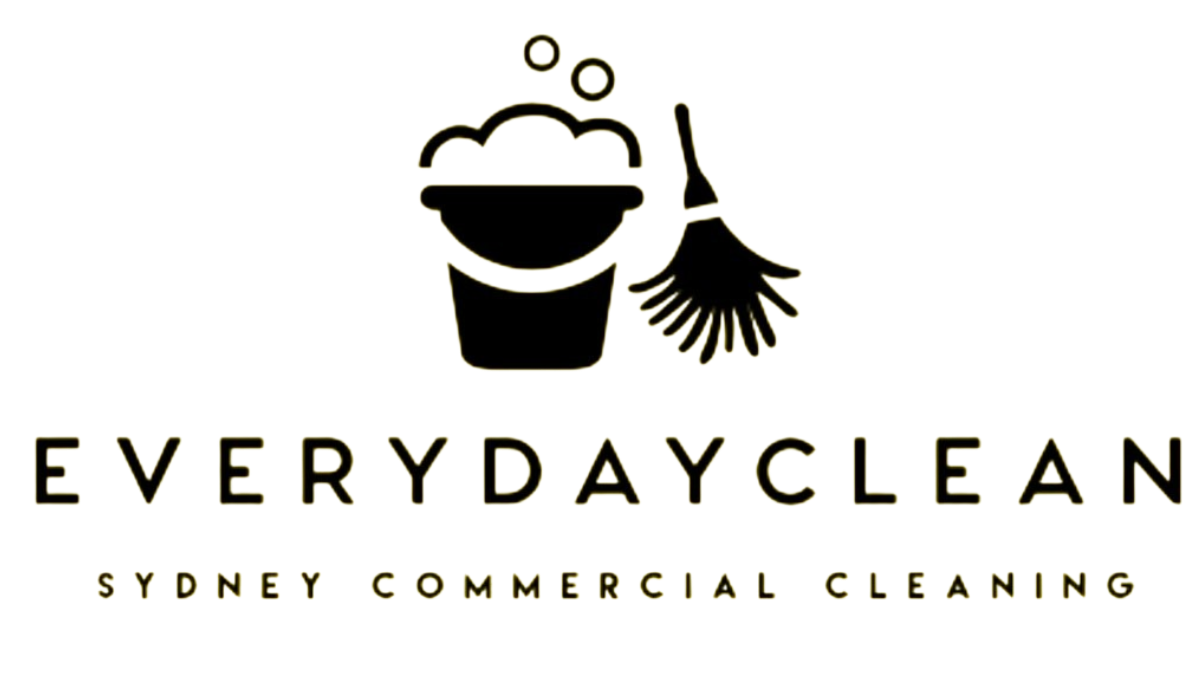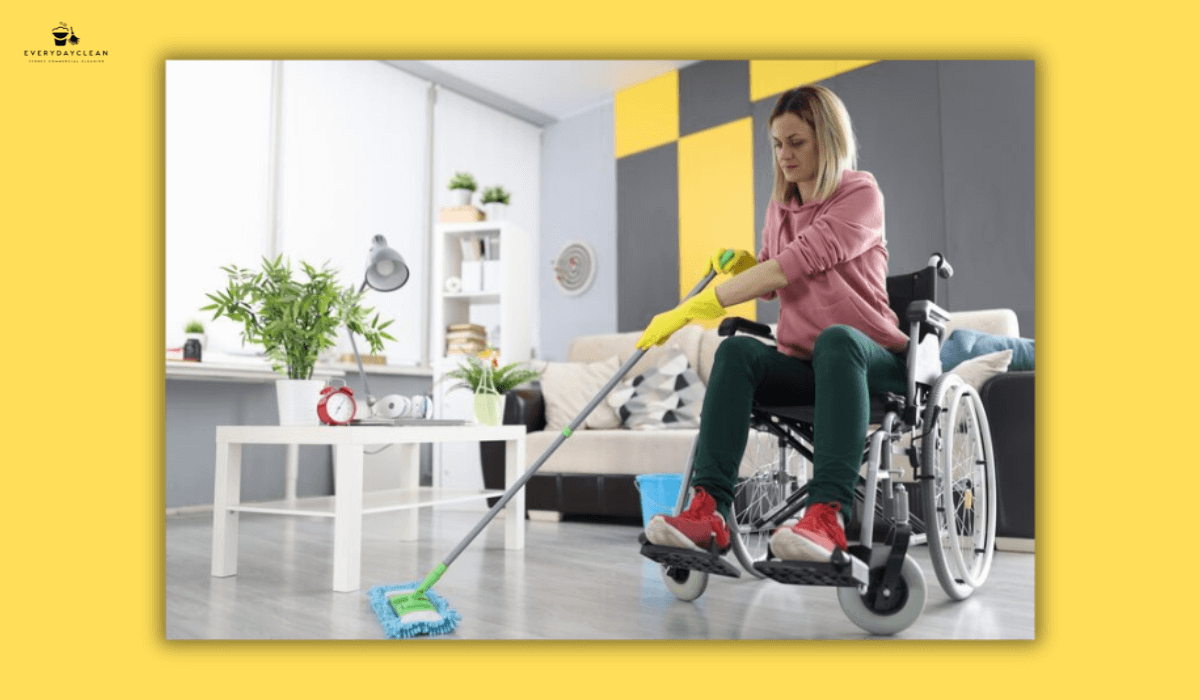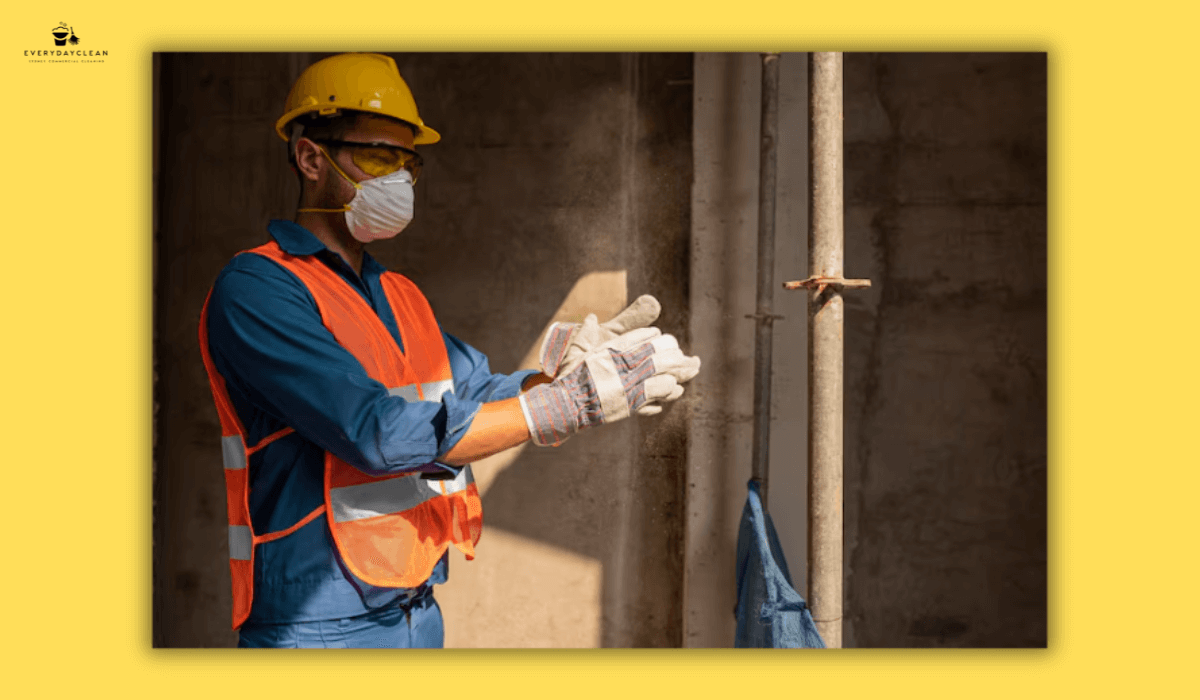How to Create an Office Cleaning Checklist: Smart Daily
How to create an office cleaning checklist is a common challenge for Sydney businesses. A structured checklist keeps hygiene consistent, avoids missed tasks, and ensures staff and clients feel comfortable. Everyday Clean shares smart daily and weekly steps, plus expert tips to help your office stay clean and compliant. Learn more about our professional office cleaning services to keep your workplace spotless.
An office cleaning checklist includes daily tasks like emptying bins, sanitising desks, and vacuuming, plus weekly deep-cleaning for kitchens, bathrooms, and shared spaces.
Why You Need an Office Cleaning Checklist
Before building your checklist, it’s important to understand the value it brings. This section explores the key reasons a structured office cleaning checklist improves health, efficiency, and accountability.
A clearly defined office cleaning checklist acts as more than just a task list—it becomes a workplace hygiene system. With increased expectations around cleanliness in modern office environments, especially in Sydney’s high-density business hubs, maintaining rigorous hygiene isn’t optional. Whether it's a small shared workspace or a multi-storey corporate building, a checklist ensures no critical task is overlooked.
- Maintain a clean and professional environment: A tidy space reinforces your brand image.
- Ensure compliance with health and safety regulations: Avoid violations or work disruptions due to hygiene issues.
- Support team accountability and reduce oversight: Everyone knows what needs to be done—and when.
- Improve employee well-being and reduce sick days: Clean environments contribute to healthier teams and higher morale.

How to Clean an Office: Step-by-Step Guide
A well-structured cleaning checklist should be clear, consistent, and tailored to your office’s layout and usage patterns. Below are the six smart steps to build a comprehensive and compliant cleaning plan.
Step 1 – Define Your Cleaning Objectives and Priorities
Your checklist should reflect your office’s specific needs. This step ensures you customise your list based on usage patterns, traffic zones, and special requests.
Start by mapping out your office's structure: how many employees work in the space, how often clients visit, and which zones experience the most traffic. A graphic design studio, for example, may prioritise dust-free equipment surfaces, while a law firm might focus more on reception cleanliness. These priorities shape both the checklist and the resources required.
Ask the following:
- What areas need to be cleaned regularly?
- Are there any high-priority or high-touch surfaces?
- Are there specialised tasks needed (e.g., sanitisation, eco-products)?
- Should some areas receive more frequent attention than others?
By clarifying these objectives, you lay the foundation for a targeted and efficient cleaning routine.
Step 2 – Choose the Right Cleaning Frequency
Establishing the right cleaning frequency for each task is essential for efficiency and effectiveness. This step breaks down which duties should be done daily, weekly, or monthly to keep your workplace consistently clean without unnecessary duplication.
Daily Office Cleaning Tasks
These include routine maintenance to ensure cleanliness every day.
- Empty all waste bins and replace liners.
- Wipe down desks, countertops, and shared tables with disinfectant.
- Clean high-touch surfaces such as door handles, elevator buttons, and light switches.
- Vacuum high-traffic areas, including reception and walkways.
- Sanitise bathroom surfaces and restock soap/toilet paper.
Weekly Office Cleaning Tasks
These tasks require deeper attention to ensure the workplace remains hygienic over time.
- Disinfect office phones and shared equipment.
- Wipe down cubicle partitions and chair handles.
- Clean inside the microwave, toaster, and kitchen appliances.
- Vacuum and mop less-trafficked areas like meeting rooms.
- Clean skirting boards and behind furniture.
Monthly Office Cleaning Tasks
Focuses on deeper, often neglected areas.
- Clean air vents and replace filters if needed.
- Wash interior windows and glass partitions.
- Polish wooden desks and other furniture surfaces.
- Deep-clean upholstery or spot-treat carpets.
Organise and sanitise storage areas.
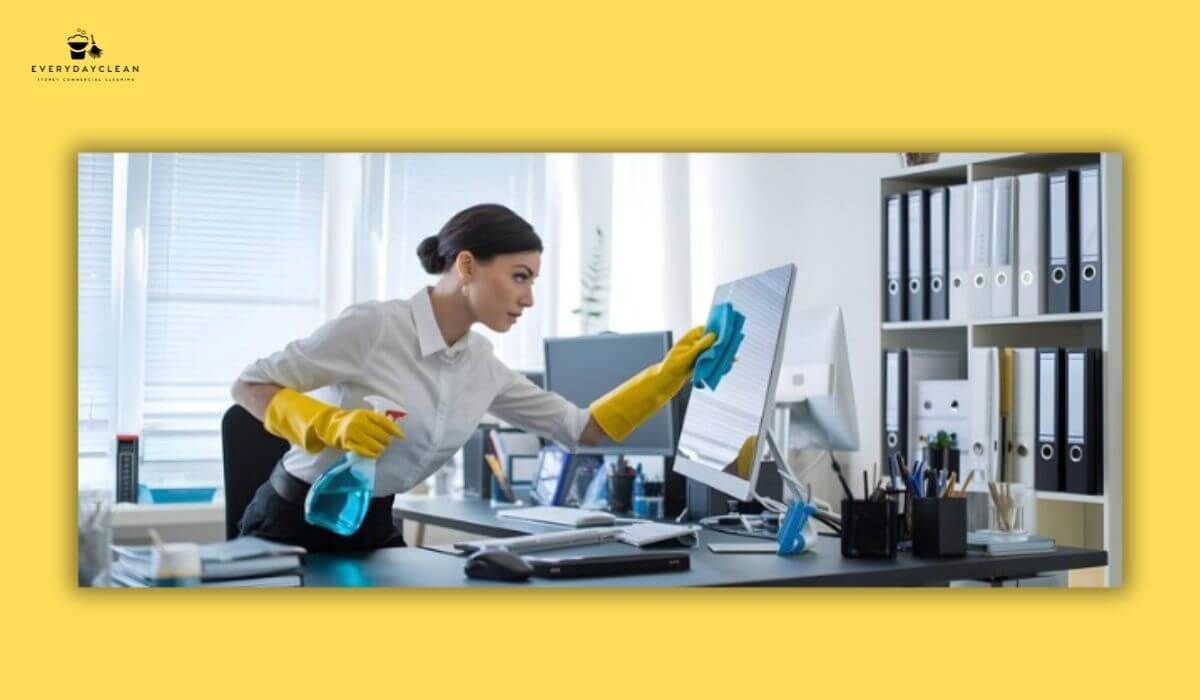
Step 3 – Break Down Cleaning Tasks by Area
To ensure no space is overlooked, cleaning tasks must be tailored to the function of each office zone. From reception to bathrooms, this section identifies essential cleaning tasks by area, ensuring full coverage and accountability.
Reception Area
Focus on presentation and cleanliness.
- Dust all counters and display areas.
- Clean entry glass doors and interior glass partitions.
- Vacuum carpet and entry mats thoroughly.
- Sanitise front desk surfaces and pens used by visitors.
Workspaces and Cubicles
Keep employee workstations clean and hygienic.
- Wipe computer monitors and keyboards using an appropriate cleaner.
- Empty under-desk bins and replace liners.
- Vacuum individual work areas.
- Sanitise armrests, desktops, and desk phones.
Kitchen / Break Room
This area needs frequent disinfection to prevent food contamination.
- Clean the microwave interior and exterior.
- Wipe kitchen benches and cupboards.
- Mop floor with disinfectant.
- Empty the fridge weekly and discard old food items.
Bathrooms
High-risk area requiring regular disinfecting and supply checks.
- Disinfect toilets, sinks, and sanitary bins.
- Replenish toilet paper, paper towels, and hand soap.
- Clean and polish mirrors.
- Mop floors with anti-bacterial cleaner.
Step 4 – Prepare Tools, Supplies, and Safety Gear
A well-structured checklist is only as effective as the supplies behind it. This section details the essential cleaning products, tools, and safety gear your team needs—plus how to store and document them correctly.
- Stock all-purpose cleaners, disinfectants, glass cleaners, and floor-specific products.
- Organise cleaning tools: mops, vacuum, microfibre cloths, scrubbing brushes, gloves.
- Ensure staff have PPE: gloves, aprons, face masks, and eye protection.
- Store supplies safely in a dry, ventilated storage area.
- Document COSHH sheets and chemical safety information.
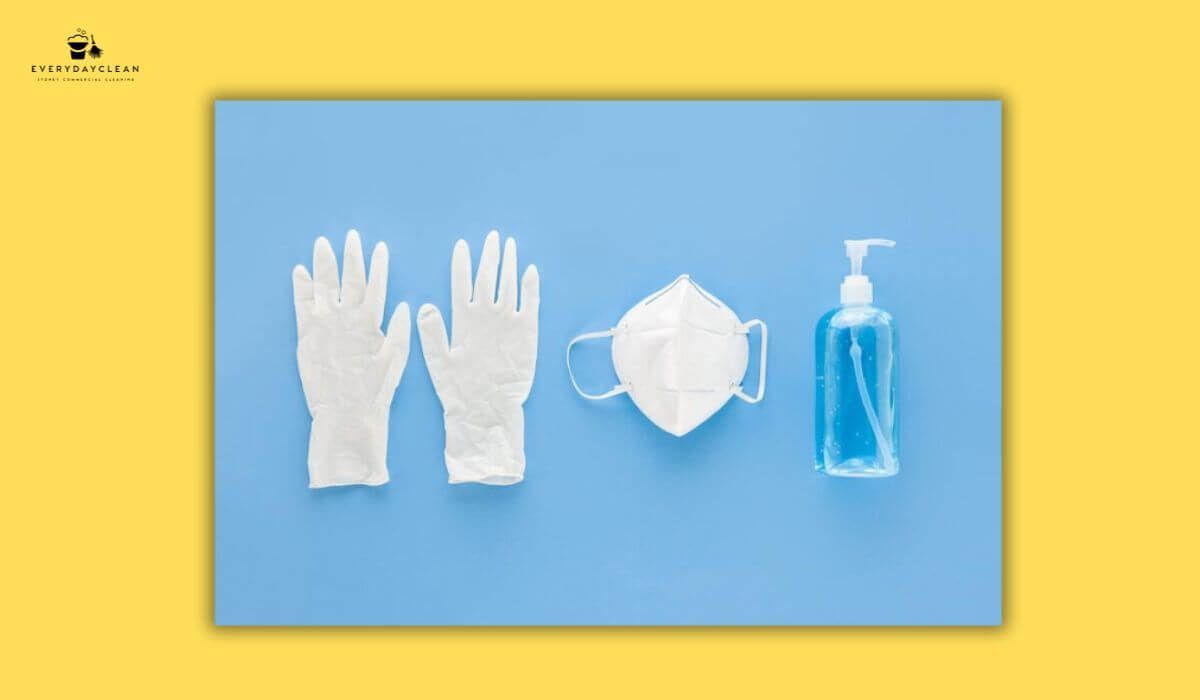
Step 5 – Assign Responsibilities and Create a Cleaning Schedule
Creating a checklist is only half the task—the other half is ensuring it's followed. This section explains how to assign responsibilities, use checklists for verification, and implement reminders that make cleaning part of your team’s routine.
- Assign daily and weekly tasks to designated staff or cleaning providers.
- Use printed or digital checklists for tracking.
- Rotate responsibilities weekly to avoid task fatigue.
- Include supervisor sign-offs for compliance and assurance.
- Use scheduling apps or reminders to maintain consistency.
Step 6 – Monitor, Update, and Improve the Checklist
Workplaces evolve—so should your cleaning checklist. In this step, you’ll learn how to audit, gather feedback, update your task list, and integrate digital tools to keep your cleaning process efficient and up to date.
- Conduct audits weekly or monthly and log results.
- Gather feedback from cleaning teams or office staff.
- Update the checklist after office layout changes or staffing increases.
- Use visuals or app-based checklists for accessibility.
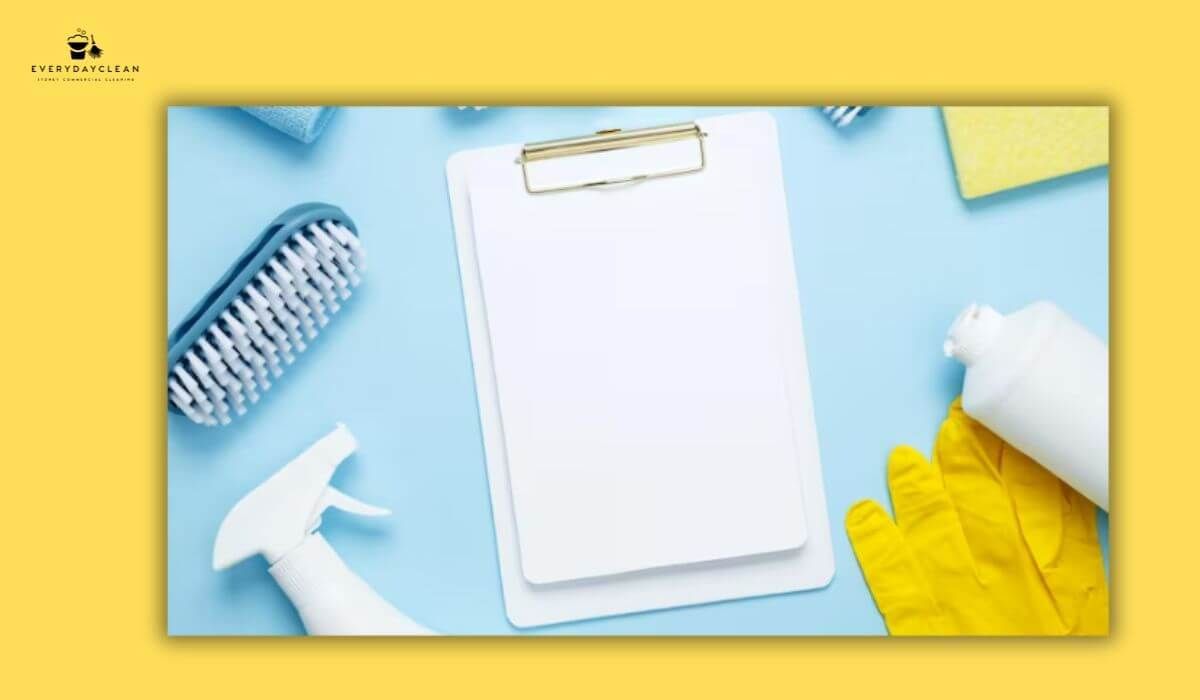
Create Your Office Cleaning Checklist with Everyday Clean Today
A well-designed office cleaning checklist empowers your team, protects your business, and creates a more productive environment. By aligning cleaning goals with structured tasks, defined frequency, and assigned accountability, your checklist becomes a powerful management tool.
When staff, clients, and management all operate in a consistently clean space, the benefits are immediate and long-lasting. Whether managing a small startup or a high-traffic corporate office, following the steps outlined above ensures your team knows exactly how to create an office cleaning checklist that works.
Everyday Clean helps Sydney businesses design and maintain customised office cleaning checklists. Our experienced team delivers consistent results, using eco-conscious products and tailored scheduling to match your workplace’s exact needs. Discover why so many companies trust us by visiting Everyday Clean's Commercial cleaning experts.
Contact Everyday Clean for a free consultation.
FAQs About Creating an Office Cleaning Checklist
Common questions arise when setting up an office cleaning checklist. Here are clear answers to help you get it right.
1. What should be included in a basic office cleaning checklist?
A standard office cleaning checklist includes daily tasks (e.g., emptying bins, wiping desks, sanitising high-touch areas), weekly tasks (e.g., vacuuming carpets, cleaning windows), and monthly deep cleans (e.,g. air vents, upholstery). Tailor it based on office size and usage.
2. How do I customise a cleaning checklist for different office sizes?
For small offices, focus on essential areas like desks, kitchens, and bathrooms. For larger workplaces, divide the checklist by zones (reception, open-plan areas, meeting rooms) and assign frequency and responsibilities accordingly.
3. Are there any templates for creating an office cleaning checklist?
Yes. Many commercial cleaning companies offer downloadable templates. You can also build one using tools like Google Sheets or Notion, starting with categories like “Daily Tasks,” “Weekly Tasks,” and “Monthly Deep Cleans” based on your business needs.
4. What cleaning supplies should I include when planning the checklist?
Include general supplies like disinfectant, microfiber cloths, vacuum, mop, bin liners, and hand sanitiser. Also consider eco-friendly or fragrance-free products for employee sensitivities. Restock items should be noted in the checklist as well.
5. How often should office cleaning be done — daily or weekly?
High-traffic areas (kitchens, bathrooms, desks) need daily cleaning, while less-used zones (windows, furniture, vents) may require weekly or monthly attention. An effective checklist strikes the right balance between hygiene, staff comfort, and operational efficiency.
Author: Everyday Clean Content Team
Everyday Clean is Sydney’s trusted provider of professional office, strata, and commercial cleaning services. Our licensed and insured team helps workplaces maintain top hygiene standards with eco-friendly products and proven cleaning systems. With years of experience supporting Sydney businesses, Everyday Clean shares expert tips, real case studies, and practical advice to keep your workplace safe, compliant, and welcoming.
